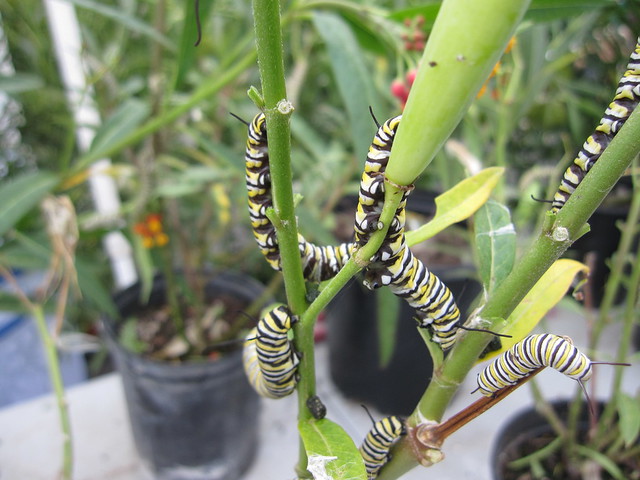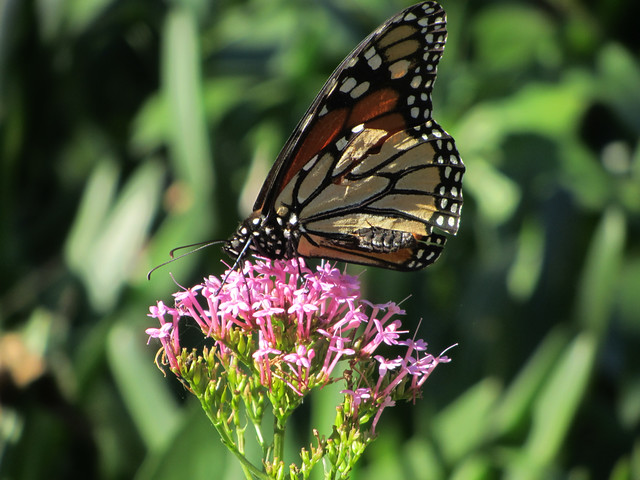It turns out that you're looking at what may soon become a rare sight out in the wild -- monarch caterpillars feeding on milkweed.
It's not just the plant that, thanks to rampant development, is getting hard to find. The monarch butterfly, which feeds on milkweed during its formative stage, appears to be vanishing.

From the New York Times:
This year, for or the first time in memory, the monarch butterflies didn't come, at least not on the Day of the Dead. They began to straggle in a week later than usual, in record-low numbers. Last year's low of 60 million now seems great compared with the fewer than three million that have shown up so far this year. Some experts fear that the spectacular migration could be near collapse.
(skip)
A big part of it is the way the United States farms. As the price of corn has soared in recent years, driven by federal subsidies for biofuels, farmers have expanded their fields. That has meant plowing every scrap of earth that can grow a corn plant, including millions of acres of land once reserved in a federal program for conservation purposes.Another major cause is farming with Roundup, a herbicide that kills virtually all plants except crops that are genetically modified to survive it.
As a result, millions of acres of native plants, especially milkweed, an important source of nectar for many species, and vital for monarch butterfly larvae, have been wiped out. One study showed that Iowa has lost almost 60 percent of its milkweed, and another found 90 percent was gone. "The agricultural landscape has been sterilized," said Dr. Brower.

I'm not even quoting the most alarming parts of the piece, which talks about the plight of the wild honey bee and other vital insects.
Will the final sentence of the story prove to be a call to action, or is it an obit?







